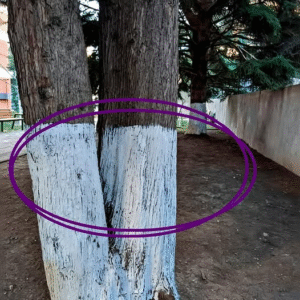Ever held a tool that feels like it’s lived through a hundred stories? If you’ve ever handled a vintage chasing hammer head, then you know what we’re talking about. This compact but mighty tool might look simple, but its contribution to centuries of craftsmanship is anything but ordinary. Used by metalsmiths, jewelers, and artisans alike, the chasing hammer head isn’t just another item in a toolbox—it’s a symbol of skill, precision, and tradition.
Let’s uncover why this humble hammer was once a must-have in every serious craftsman’s kit—and why it still holds a place of honor among today’s creators.
What Makes the Chasing Hammer Head So Special?
If you’re picturing a bulky carpenter’s hammer, think again. The chasing hammer head is refined, balanced, and made for delicate, intricate work. Designed with two distinct faces—one rounded and one flat or slightly domed—this tool was crafted for subtlety.
The rounded side is ideal for shaping and creating texture, while the flat side is used for planishing, a fancy word for smoothing out metal surfaces. Think of it as the artisan’s paintbrush—every tap, every strike guided by experience and intuition.
In the event of a heart attack, you only have seconds to save your life. What should you do?
Why Artisans Swore by It
Here’s the deal: when you’re working with precious metals like gold, silver, or copper, brute force won’t get you far. You need control—and that’s exactly what the chasing hammer head delivered.
Its balance made it easy to maneuver. Its weight let artisans apply just the right pressure. It wasn’t about smashing—it was about coaxing the metal into beauty. Every dent, groove, or smooth curve created with this hammer was part of a larger masterpiece.
The Roots of a Timeless Craft
You can trace the chasing hammer’s lineage back to ancient times—yes, seriously. Think Egypt, Mesopotamia, and Greece. Chasing and repoussé (working metal from the reverse side) were used to create stunning decorative pieces, from jewelry to religious artifacts.
Fast forward to medieval Europe, and these tools were everywhere—from the hands of goldsmiths crafting chalices for cathedrals to armorers decorating the gear of nobility. The chasing hammer wasn’t just functional—it helped tell stories in metal.
Even during the Industrial Revolution, when machines took over mass production, this tool remained in demand. Why? Because nothing beats handcrafted detail, and nothing helped bring that detail to life quite like the chasing hammer head.
Craftsmanship in Every Strike

Using a chasing hammer might sound easy, but mastering it? That took years. You had to learn how to read the metal—its tension, its resistance, its readiness to be shaped. Too hard a hit? You’d ruin the piece. Too soft? The design wouldn’t hold.
It was about rhythm, timing, and finesse. The kind of skill passed down from master to apprentice. The kind of artistry that left a mark—literally and figuratively.
The Role It Played in Iconic Creations
Here’s a mind-blowing fact: tools like the vintage chasing hammer head were used in the creation of the Statue of Liberty’s copper skin. Yep, French craftsmen used chasing and repoussé techniques to shape her iconic curves and details. That’s the level we’re talking about.
From Renaissance armor etched with exquisite patterns to Ottoman shields and ceremonial blades, the chasing hammer brought art to life. And in every case, it wasn’t just about function—it was about elevating metalwork into something breathtaking.
The Legacy Lives On
Video: 5 Super Rare Hammers – Restoration
While technology has changed the way we craft, many modern artisans still reach for vintage chasing hammers. Why? Because these tools carry history. They’ve aged, they’ve been used, and they have a soul. There’s something magical about holding a tool that’s been part of hundreds of creations before your own.
Collectors seek them out. Metal artists cherish them. And when you find one at a flea market or tucked away in a workshop drawer, you’re not just holding steel—you’re holding a story.
What Makes It a Collector’s Dream
Today, finding a vintage chasing hammer head in good condition is like stumbling upon buried treasure. For collectors and creators alike, it’s not just about utility—it’s about connection. Each hammer has its own wear, its own patina, and that tells a story all its own.
These tools often sit on display not just in studios but in museums. They represent a tactile, hands-on era of craftsmanship that stands in contrast to our digital age. And in their small but mighty form, they remind us that true artistry never goes out of style.
Why It Still Matters Today

With all the tech and automation available, you might wonder: why bother with something so old-school?
Because craftsmanship matters.
Because handmade beauty has soul.
Because in a world full of shortcuts, taking the long, skilled route is still powerful.
Modern metalsmiths and jewelers are breathing new life into old tools. And when they use a vintage chasing hammer head, they’re not just making art—they’re preserving history.
More Than Metal, It’s a Masterpiece Maker
So, do you recognize this classic tool? If you do, you’re part of a rare group who understands what real craftsmanship feels like. The vintage chasing hammer head may look simple, but it’s packed with legacy. It helped shape treasures. It told stories through every engraved line. And for generations, it stood as a symbol of skilled hands and artistic dedication.
Whether you’re a maker, a collector, or just a lover of vintage tools, remember this: behind every great work of metal, there was once a chasing hammer—and a person with the vision to use it.





